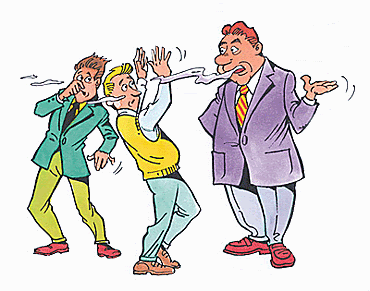Bad Breath Cat-Astrophe
Cure Your Bad Breath In 3 Days, Click Here To Know More
>> Click Here To Know The Symptoms, Causes & Effective Cures For Bad Breath <<
Are you dealing with cat breath that's nothing short of "cat-astrophic?" Fear not - for your days spent living with horrid halitosis are nearing a much anticipated end.
Nasty feline breath is, unfortunately, pretty common and is probably caused by dental disease. Basically, what's happening is bacteria is building up along the gum line, leading to gingivitis, inflamed gums, or infection. If left unchecked, gingivitis can eventually cause periodontitis, an inflammation of deeper tissues surrounding and supporting the teeth, and in severe cases, infection in the mouth can spread through the bloodstream to other parts of the body!
So which cats are at risk for dental disease? Most pets show early signs of dental disease soon after reaching maturity, especially if they haven't been getting preventive care. But other factors can influence your pet's risk for dental disease. Here are just a few:
* Diet - Dry foods leave less residue on the teeth compared with soft foods. Chewing hard kibble helps keep your pet's teeth clean, but it isn't always enough. Ask your veterinarian about a specially formulated diet for cats that reduces tartar formation.
* Chemistry - One of the main factors that could lead to tartar buildup is your cat's individual mouth chemistry. Some pets need yearly dental cleanings and others need them only every few years.
* Metabolic Diseases - Certain metabolic diseases, like hypothyroidism or kidney disease, can boost your pet's risk of dental disease. Diseases that wreak havoc on the immune system, like feline leukemia virus and feline immunodeficiency virus infections, can also play a role.
So aside from the funky feline breath, how can cat lovers tell if their precious pet has dental disease? Keep an eye out for any of these signs:
* Red, swollen gums
* Bleeding gums
* Little or no interest in food
* Trouble eating
* Drooling
* Loose or broken teeth
* Heavy tartar deposits on teeth
* Swelling or a draining hole under the eye
If you notice any of these, get your cat to the vet ASAP.
Aside from weekly home cleanings and yearly cleanings at the vet's office, make sure your cat has a lot of dental chew toys and rawhide strips. While those alone won't prevent dental disease, they do help remove plaque. And that means your cat's bad breath will soon be a distant memory!
Jed Yorkshire is a retired teacher and pet enthusiast who writes about canine health topics, specialty breeds, animal training and grooming. An avid pet lover and breeder, he owns four beautiful Giant Schnauzers. Yorkshire also works as a private pet behavior consultant
Labels: bad_beyonces_breath_gossip_kelis_nas, bad_bible_breath, bad_breath_curing_las_vegas, bad_breath_healthcomplications.com, bad_breath_picture

